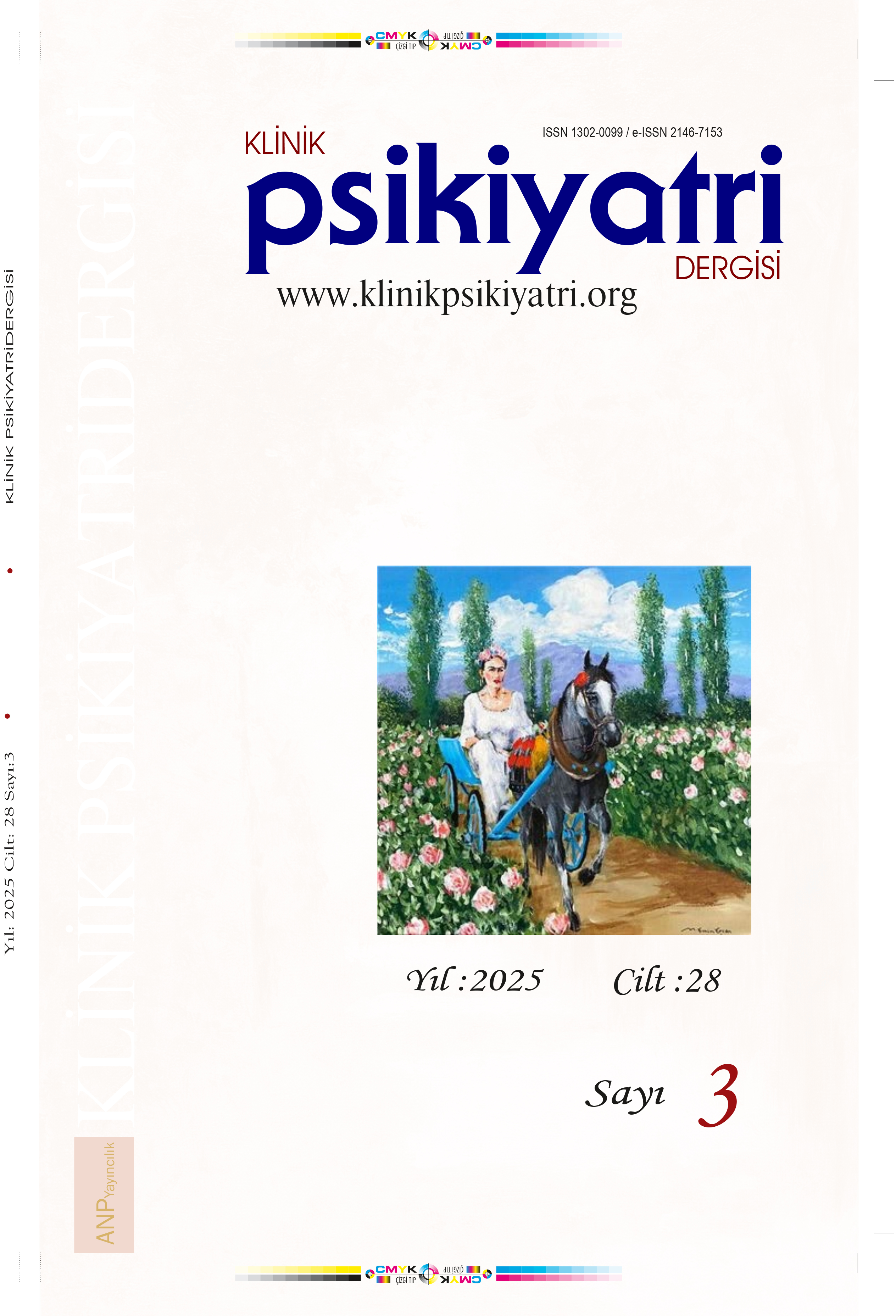




Stroop testi Çapa formu’nun bipolar bozuklukta yürütücü işlev bozukluklarını ayırt edici geçerliği
Ceren Hıdıroğlu Ongun1, Derya Durusu Emek Savaş1, Deniz Ceylan2, Ayşegül Özerdem31Dokuz Eylül Üniversitesi Edebiyat Fakültesi, Psikoloji Bölümü, Deneysel Psikoloji Anabilim Dalı, İzmir, Türkiye2Koç Üniversitesi Tıp Fakültesi, Psikiyatri Anabilim Dalı, İstanbul, Türkiye
3Mayo Clinic Psikiyatri ve Psikoloji Bölümü, Rochester, Minnesota, Amerika Birleşik Devletleri
GİRİŞ ve AMAÇ: Bilişsel işlevlerde bozulma, bipolar bozukluğun önemli bir özelliği olarak kabul edilmekte ve bipolar bozukluk için endofenotipik bir belirteç olarak incelenmektedir. Stroop Testi, tepki inhibisyonu ve set değiştirme gibi yürütücü işlevleri değerlendirmede çok yaygın olarak kullanılmaktadır. Bu çalışmanın amacı; Stroop Testi Çapa Formu’nun bipolar bozukluk tanısı almış ve ötimi döneminde olan bireylerde yürütücü işlevlerdeki bozulmanın belirlenmesinde ne ölçüde duyarlılık ve özgüllük gösterdiğini inceleyerek testin ayırt ediciliğinin belirlenmesidir.
YÖNTEM ve GEREÇLER: Geriye dönük nitelikte olan bu çalışmaya, 156 Bipolar Bozukluk tip I tanısı olan ve ötimi dönemindeki kişiler ile 125 sağlıklı kontrol dâhil edilmiştir. ROC analizleri Stroop A, Stroop B, Stroop C bölüm süreleri ve hesaplanan Stroop D süresi için ayrı ayrı yürütülmüş, her puan türü için optimal, tanısal ve tarama kesme noktaları ile karşılık gelen duyarlılık, özgüllük, pozitif ve negatif tahmin değerler belirlenmiştir.
BULGULAR: Bipolar bozukluk grubu, testin tüm alt bölümlerini sağlıklı kontrol grubuna kıyasla daha uzun sürede tamamlamıştır (tümü için p<0,007). Bipolar bozukluk grubunu sağlıklı kontrollerden ayırt etmede en yüksek AUC değeri Stroop C bölümü için saptanmış (AUC=0,671; p<0,0001); bunu sırasıyla Stroop A (AUC=0,659; p<0,0001), Stroop D (AUC=0,649; p<0,0001) ve Stroop B (AUC=0,606; p=0,0019) bölümleri izlemiştir.
TARTIŞMA ve SONUÇ: Sonuçlar, Stroop Testi Çapa Formu sürelerinin bipolar bozuklukta tek başına kullanıldığında çok yüksek duyarlılık ve özgüllük değerlerine ulaşmadığını, bipolar bozukluğun klinik ve bilişsel değerlendirmelerinde diğer test ve yöntemlerle bir arada kullanılması gerektiğini göstermektedir.
Discriminative validity of the Stroop test Çapa version for executive function deficits in bipolar disorder
Ceren Hıdıroğlu Ongun1, Derya Durusu Emek Savaş1, Deniz Ceylan2, Ayşegül Özerdem31Dokuz Eylül University Faculty of Letters, Department of Psychology, Experimental Psychology Program, Izmir,Turkey2Koç University School of Medicine, Department of Psychiatry, Istanbul, Turkey
3Mayo Clinic Department of Psychiatry and Psychology, Rochester, Minnesota, USA
INTRODUCTION: Impairment in cognitive functions is recognized as an important feature of bipolar disorder and has been studied as an endophenotypic marker for bipolar disorder. The Stroop Test is widely used to assess executive functions such as response inhibition and set shifting. This study aimed to evaluate the Stroop Test Çapa Version by examining its sensitivity and specificity in assessing executive function impairment in individuals diagnosed with bipolar disorder during the euthymic state.
METHODS: In this retrospective study, 156 euthymic patients with bipolar disorder type I and 125 healthy controls were included. ROC analyses were conducted separately for the completion times of Stroop A, Stroop B, and Stroop C subtests and Stroop D (calculated as the reaction time difference between Stroop C and Stroop B). Optimal, diagnostic, and screening cut-off points and corresponding sensitivity, specificity, and positive and negative predictive values were determined for each score type.
RESULTS: The bipolar disorder group took longer to complete all subtests than the control group (p<0.007 for all). The highest AUC value was found for Stroop C (AUC=0.671; p<0.0001), followed by Stroop A (AUC=0.659; p<0.0001), Stroop D (AUC=0.649; p<0.0001) and Stroop B (AUC=0.606; p=0.0019).
DISCUSSION AND CONCLUSION: The results show that Stroop Test Çapa Version reaction times do not reach very high sensitivity and specificity values when used alone in bipolar disorder and should be used in combination with other neuropsychological tests and methods in clinical and cognitive assessment of bipolar disorder.
Makale Dili: Türkçe
(624 kere indirildi)











